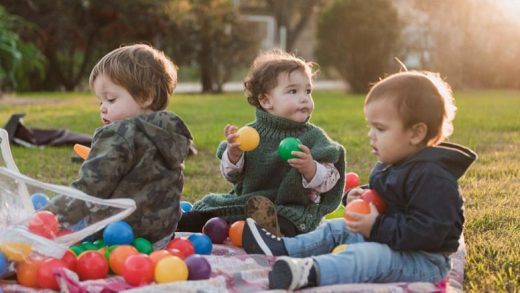The celestial realm has always fascinated young minds, and what better way to kindle their interest in astronomy than through engaging moon crafts and activities? This article will explore a variety of moon craft ideas and activities designed to captivate the imagination of children, making learning about the cosmos a fun and interactive experience.
Unleashing Creativity: Moon Craft Ideas
DIY Moon Model: Encourage creativity by helping children create their own 3D moon model using simple materials like paper, glue, and paint. This hands-on craft not only teaches them about the moon’s surface features but also enhances their fine motor skills.
Example: Sarah proudly displayed her DIY moon model, showcasing craters and mountains as if it were a miniature lunar landscape.
Lunar Phases Mobile: Foster an understanding of lunar phases with a mobile craft. Using cardboard, string, and images representing each moon phase, children can assemble a mobile that visually illustrates the moon’s changing appearance.
Example: Tom was mesmerized by the lunar phases mobile he created, swinging gently as he explained each phase to his friends.
Moon Rock Painting: Transform ordinary rocks into moon rocks! This craft involves painting rocks with a lunar landscape, providing an opportunity to discuss the moon’s composition and the concept of craters.
Example: The children were thrilled to take home their moon rock paintings, proudly showcasing their artistic interpretations of the moon’s surface.
How to Make a Moon Craft: Step-by-Step Guide
Creating a moon craft can be an exciting activity for both parents and children. Here’s a step-by-step guide on making a simple yet captivating paper plate moon craft:
Materials Needed:
Paper plate
Grey paint
Paintbrush
Glue
Cotton balls
Steps:
Paint the Plate: Begin by painting the paper plate with grey paint to mimic the moon’s surface. Allow it to dry thoroughly.
Add Texture: Enhance the moon’s texture by dabbing on a bit of white paint or glue and pressing cotton balls onto the surface.
Create Craters: Use the end of a paintbrush or your fingertips to create craters on the moon’s surface while the paint is still wet.
Let It Dry: Allow the craft to dry completely before displaying or using it in other activities.
Example: The children gleefully followed the step-by-step guide, creating their paper plate moon crafts with enthusiasm.
Moon Activities for Kids: Blending Education with Fun
Moon Journal: Encourage children to observe the moon regularly and maintain a moon journal. They can sketch the moon’s appearance each night, noting changes in its shape and size.
Example: Lucy diligently documented the moon’s phases in her journal, expressing excitement at spotting a full moon during a clear night.
Moon Phases Oreo Activity: Combine education with a tasty treat! Using Oreo cookies, children can recreate the moon phases by scraping off the cream to represent different lunar phases.
Example: The classroom buzzed with excitement as children bit into their Oreo cookies, eagerly identifying the different moon phases.
Starry Night Sky Binoculars: Craft simple binoculars using toilet paper rolls and black construction paper. Attach glow-in-the-dark stars to the paper, and let children explore the night sky indoors.
Example: James was amazed at the “starry” view through his homemade binoculars, sparking an interest in stargazing.
Paper Plate Moon Craft: A Versatile Educational Tool
The paper plate moon craft stands out as a versatile educational tool, offering various ways to incorporate learning into play. Teachers and parents can use this craft in different activities, such as:
Moon Storytelling: Encourage children to create stories or poems inspired by their paper plate moon crafts. This enhances language skills and allows them to express their imaginative ideas.
Example: The classroom echoed with laughter as children shared their moon-inspired stories during storytime.
Moon Phases Game: Cut out moon phase shapes from black paper and attach them to a spinner. Children can take turns spinning and identifying the corresponding moon phase on their paper plate crafts.
Example: The competitive spirit was high as the children engaged in the moon phases game, testing their knowledge while having fun.
Enhancing Cosmic Exploration: Unveiling More Moon-Themed Adventures
Beyond the Paper Plate: Innovative Moon Craft Ideas
While the paper plate moon craft is a fantastic starting point, there are numerous other creative ways to explore the moon theme. Consider incorporating recycled materials like egg cartons to craft a textured lunar surface or using glow-in-the-dark paint to add an element of magic to the moon’s glow. These variations not only broaden the artistic possibilities but also deepen children’s understanding of different aspects of the moon.
Stellar Connections: Moon Crafts and Collaborative Learning
Encourage collaborative learning by engaging children in group moon projects. They can work together to create a large-scale lunar surface mural, combining individual paper plate moon crafts into a collaborative masterpiece. This not only enhances teamwork but also reinforces the concept of a shared fascination with the moon.
Educational Outings: Moon-Related Field Trips
Take learning beyond the classroom by organizing field trips to planetariums or observatories. Witnessing the moon through telescopes and engaging with astronomy experts can elevate children’s understanding and passion for celestial bodies.
Bringing the Moon Indoors: Moonlit Bedroom Decor
Extend the learning experience into the home by incorporating moon-themed decor. Create a moonlit bedroom with wall decals, glow-in-the-dark stars, and DIY moon crafts. This immersive environment ensures that the fascination with the moon continues even after the crafting and activities are done.
The Cosmic Corner: Establishing a Lunar Learning Space
Dedicate a corner of the classroom or home as a “Cosmic Corner,” adorned with moon crafts, space-themed books, and educational posters. This designated space serves as a constant reminder of the wonders of the universe, fostering a continuous interest in astronomy.
Conclusion: Nurturing Curiosity in the Cosmos
Engaging children in astronomy through moon crafts and activities is not just about imparting knowledge; it’s about fostering a lifelong curiosity for the cosmos. The hands-on experiences provided by these crafts make learning about the moon and space an enjoyable journey.
As we inspire the next generation of astronomers, it’s crucial to create an environment that nurtures curiosity and creativity. Kangaroo Kids, with its commitment to holistic learning, provides a perfect platform for children to explore the wonders of the universe in a playful and educational manner.
So, let’s continue to gaze at the moon, both in the night sky and through the eyes of our children, as we embark on this cosmic adventure together.








